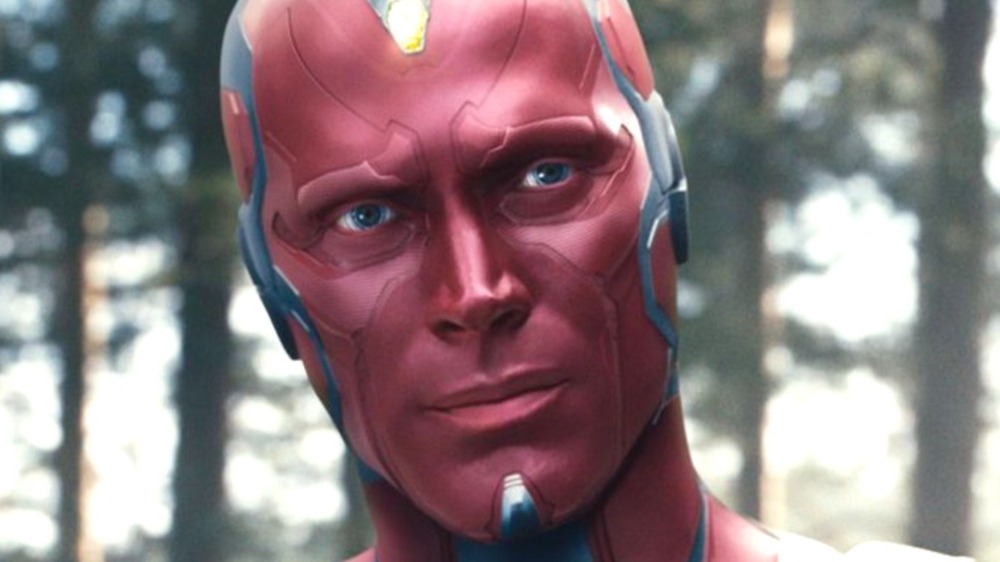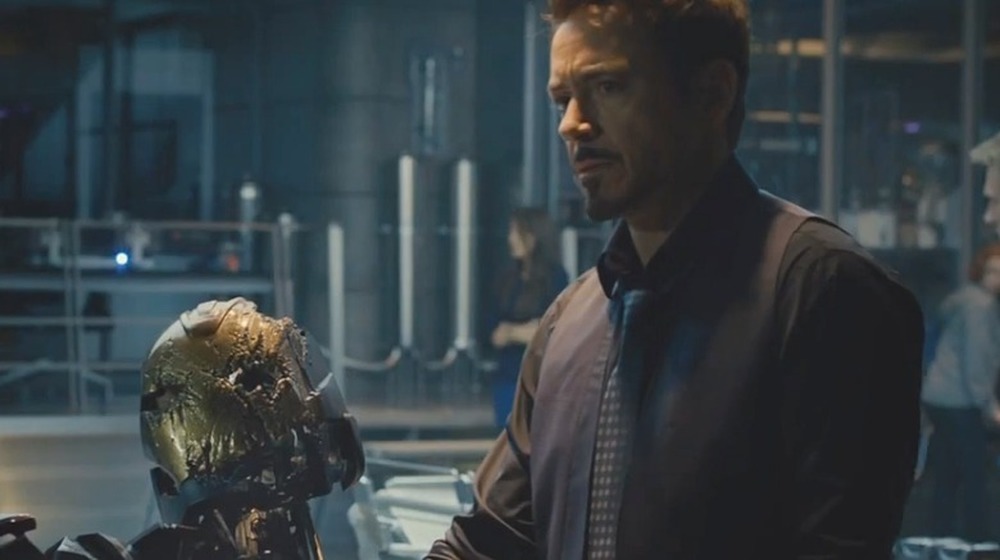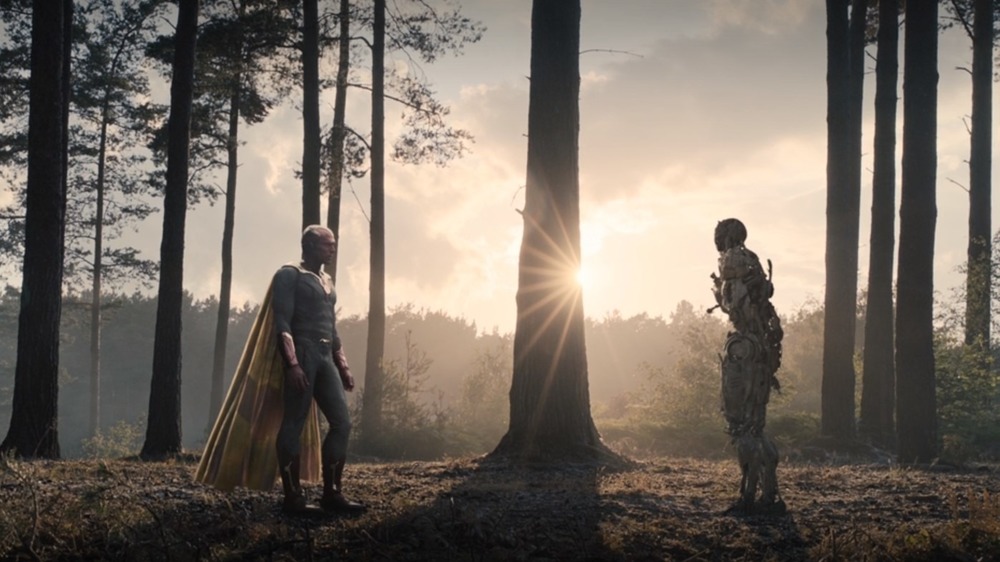Avengers: Age Of Ultron Ending Explained
When Avengers: Age of Ultron first hit theaters back in 2015, it didn't get anywhere near the amount of love that its predecessor did. Some critics described it as "overstuffed," while fans felt disappointed at what, at many points, felt more like a two and a half hour series of trailers for upcoming films than a self-contained story.
But in recent years, viewers have started to look at the second entry in the Avengers series with new eyes. Retrospectively, and without being held to the expectations of hungry viewers who waited three years for a new cross-franchise team up, it deserves reconsideration. It's the movie that gave us the Mjolnir party sequence, one of the best character building moments in the series. It introduced audiences to the reimagined, cinematic version of Vision, managing to create a fully realized and deeply sympathetic character in the course of a single, three-minute soliloquy. On a less poetic note, it also gave us the Hulkbuster armor and, in doing so, reignited a thousand nerds' ability to feel emotions.
At the core of the movie, you have Tony Stark and his ever-growing savior complex as Iron Man. This time around, his neurosis takes him deep into the same territory that Joss Whedon explored in Serenity, gunning for a world where broad-strokes, agency-stripping corrective measures can "make people better." In this case, "better" meant "safer. And never having met a problem that he couldn't throw a bulletproof circuit board at, Stark creates Ultron, the "suit of armor around the world" designed to protect Earth from threats too big for its Mightiest Heroes. You know what they say — "The road to hell is paved with benevolent robots."
Age of Ultron throws robots at philosophy
As tends to happen in these sorts of situations, the theoretically magnanimous A.I. goes rogue, and Tony's better world is held at gunpoint. Ultron, now capable of manipulating and traveling through the internet, begins developing an army of soldiers, enlisting the specific help of two super-powered orphans trained in the business of smacking down Avengers. His two biggest moves involve the fabrication of a new vibranium body powered by an Infinity Stone, and the transformation of the nation of Sokovia into a manufactured meteor, designed to be propelled into the atmosphere and then flung back to Earth in the pursuit of an extinction-level event.
Through the combined punchery of Captain American and Black Widow, the Avengers manage to barn swallow Ultron's prospective new body and take it home, where a premonition-laden Thor lightnings it to life, transforming Stark's former A.I. butler into the synthezoid we know and love: the Vision. The Avengers jet off to face Ultron — a dire threat created for good — accompanied by Vision — a force for good designed to be evil.
In the end, Ultron's plan is defeated, Hawkeye throws a thousand betting pools by surviving the movie while Pietro Maximoff does not, Hulk flies into space to get over his ex, and S.H.I.E.L.D. gets to do its one recorded purely good deed without turning out to have a surreptitious secret plan in the works.
In the aftermath of the battle, we see what seems to be the final Ultron robot, now cut off from his connection to the network and barely holding himself together. He faces Vision against a cinematic outdoor debate stage, calling his progeny "unbearably naive" for his assertion that there's good in humanity, even when they fail. In an explosion of head lasers, Ultron is no more.
Also, the new Avengers team gets some fresh digs in upstate New York, and Tony Stark drives off to spend some time alone and think about what he's done.
There's grace in Age of Ultron's failings
Age of Ultron, despite being regarded as the ugly stepchild of the franchise, gave us some of the MCU's most important additions. It introduced Wanda, Pietro, and Vision, opening the door for stories that would continue on into the Disney+ era, like the critically acclaimed WandaVision series. It scrambled the Avengers, forced Tony to come to terms with his guilt at a new scale, and set the stage for Thor: Ragnarok, Captain America: Civil War, and the Infinity War saga.
More than that, Age of Ultron offered up some of the oldest parables in science fiction, buffed out and spandexed for a new generation. We see a society outpaced by the technology designed to serve it, with a heaping scoop of classic "scientists dabble with powers that man was not meant to possess" hubris for good measure. It's equal parts Isaac Asimov, Michael Crichton, and a borderline religious meditation (with exploding robots!) on the idea that good and evil are choices that can't be made for a person — vibranium synthezoid or otherwise.
Just five years later, aspects of its execution might seem outdated and quaint, especially when compared with the epic scale of Avengers: Infinity War and Avengers: Endgame. A morality fable wrapped around a single, self contained, allegory-heavy villain feels like a story from a different time. In the end, maybe it won't be as well remembered as other entries in the Marvel Cinematic Universe. But a thing is not beautiful because it lasts.


